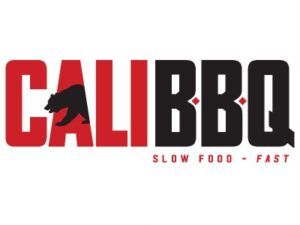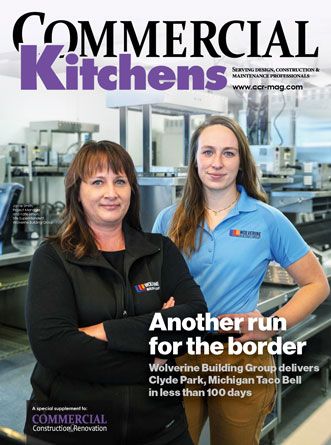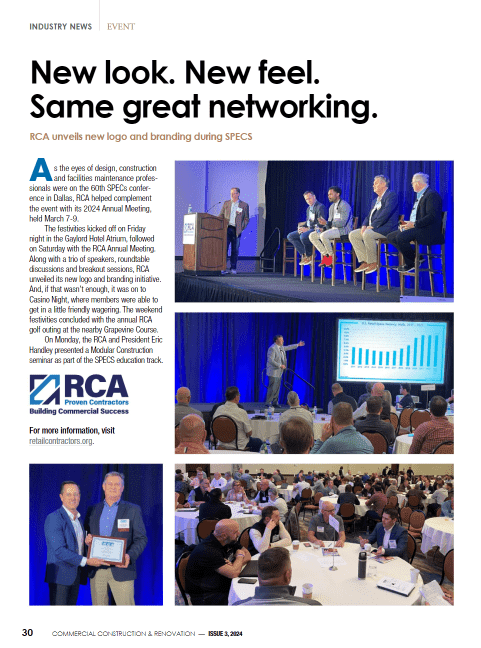
Plumber Sam Crandall remembers the job at the 4th Street Market in Santa Ana “as kind of a beast of a project.” Not that this 32-year-old contractor hesitated one bit in taking on the job when it was first offered to him — even after learning that other contractors had chosen not to get involved.
“We tend to get calls for jobs others don’t want,” explains Crandall, who with his spouse Erica started Crandall’s Plumbing in nearby Huntington Beach in 2009. “We’re used to handling all kinds of installation challenges.”
But the challenges at 4th Street involved techniques that Crandall and his technicians had not encountered previously, “and don’t come along everyday,” he admits.
“We were turning the first level of a 30-year-old, two-story building into something totally modern and different, making it impossible to anticipate every little thing. Plans changed daily. All we could do was rely on our knowledge of the local codes and design-engineer the thing as we went along.
“Their vision of the final structure got a little tricky,” continues Crandall, speaking of the building’s highly creative ownership. “But I believed in what they were doing, and that made it fun. There was always light at the end of the tunnel.”
The “they” above refers to S&A Management (Costa Mesa, Calif). The “vision” Crandall credits belongs to entrepreneur and chief strategist Ryan Chase, S&A principal and owner of the 4th Street Market, a new-wave food hall and culinary center that opened in February 2015 in Downtown Santa Ana (DTSA).
The Chase family traces its ongoing involvement in DTSA back nearly a century, to 1919, when Ryan’s great grandfather opened a shoe store there. In recent years, Santa Ana’s East End District — once known as Fiesta Marketplace — has undergone a dramatic, multi-million-dollar revitalization into “an urban oasis for up-and-coming restaurants, retailers and entertainment venues,” according to Chase.
The newest addition to this trending scene is the Fourth Street Market: an innovative, street-level emporium, designed to attract a young clientele seeking groundbreaking cuisine from talented young chefs lacking the wherewithal to go solo. Inspired by well-known food markets like Pike’s Place in Seattle and Grand Central Market in Los Angeles, 4th Street Market is 100-percent-devoted to food and the people who make it — and make it special — as Chase told Orange County’s Coast Magazine in May 2014:
“Food was always the driving force. But part of the challenge with the cutting-edge food business is that these chefs are very cool and very hip, but they don’t know how to run a business and they have no capital. So we created an incubator-type concept to help defer a lot of the startup costs and overhead these chefs face when they want to open a restaurant. The idea is to make it as simple and clean as possible…”
Now fully operational, Fourth Street consists of 15 different “artisan” food vendors occupying roughly 300 square feet apiece and with funky names like Electric City Butcher, Radical Botanicals, Chunk-N-Chip and Noodle Tramp. The largest player in the space — and the prime expression of Chase’s vision — is East End Incubator Kitchens, offering 10 commercial rental kitchens, including three for gluten-free cooking and one for confectionary items. All are intended exclusively for young masters-in-the-making to hone their culinary skills and build local followings without draining their slender resources.
Combining all of these food venues into a single, 17,000-square-foot space on one level — and the special, mechanical requirements that resulted — are what drove the plumbing design and installation challenges for the Crandall’s Plumbing crew. This was especially true for the building’s domestic hot-water system, an obviously critical need for all 22 food-service tenants in the 4th Street Market.
Up on the roof
No different than any other commercial developer, Chase sought to maximize the rentable space in renovating the first-floor venue that would ultimately house the 4th Street Market. The year-round warm climate of Southern California offers the luxury of locating building mechanical systems outdoors — in this case, on the roof — and S&A Management happily capitalized on that advantage. Given that space is so precious, “No building owner or tenant wants to see an exposed mechanical room,” says Crandall, “especially in a trendy space like 4th Street Market that caters to consumers.”
But while a rooftop location for the water heating equipment was seen as the best option from the outset, S&A Management had initially envisioned a boiler and storage-tank system until coming to grips with the daunting logistics of such an installation.
“Providing enough water for 22 tenants, plus the facility’s own needs, is a huge requirement,” says S&A construction manager Jeff Beddow. In fact, the finished building had 49 outlets for hot water: 20 kitchen sinks, 19 prep sinks, seven lavatories and three mop sinks. If all were running simultaneously, they would require a flow rate of nearly 43 gallons per minute (gpm). The system was sized for approximately 75 percent of that maximum, or 32 gpm.
“At a minimum, we would have needed two, 600-gallon storage tanks to do the job,” Beddow continues. “Not only was there no room on the first level for such a system, but its sheer weight would’ve been way too much for the roof.”
Plus, there was one other complication: As much as possible, S&A wanted to offset its operating costs by metering the hot-water consumption of each tenant separately. That way, each could pay its own monthly gas bill, rather than S&A assuming this financial burden and then wrestling with the thankless task of splitting the cost equitably.
All of which is why Chase and Beddow opted for a rooftop installation of 22, commercial-grade tankless water heaters. No question, the up-front cost of a boiler system, even with two large storage tanks would have been lower, compared with the extra gas and water lines, plus all those water meters, of the tankless setup. But the idea of individual gas bills for all those kitchen operations outweighed the cost and complexities of the tankless option.
Meanwhile, S&A encountered no objection to going tankless from local building inspectors: “Because tankless technology has improved, our local Health Department is more accepting of their use,” says Beddow. Meanwhile, Crandall liked the idea as well, having done so much work with tankless on the residential side of his business. (He currently is averaging 10 tankless installs per month.)
The tankless advantage
Manufactured by Noritz America, the 22 units at 4th Street are all Model No. NC1991-OD-NG. with a thermal efficiency of 84 percent; a maximum flow rate of 11.1 gallons per minute; and gas consumption, from 16,000 to 199,900 BTU/hour. Measuring only 23.6 inches high x 13.8 inches wide x 9.4 inches deep, up to 24 of these heaters can be “quick-connected” into a “multi-system.” At the 4th Street Market, those operations large enough to require multiple units had them linked together. The remainder are unlinked.
Beyond their diminutive size and weight (54 pounds apiece for the NC1991’s) versus a boiler and storage tank system, tankless also offers the key advantage of delivering hot water only when needed, that is, “on demand,” thus saving on storage fuel costs. This redundancy also offers a critical maintenance advantage for multi-user applications: If one unit needs servicing, it can be isolated and even removed, while the other 21 continue delivering as much hot water as needed, so that the whole building does not suffer.
Hoisting the equipment from street level with ropes — ”I hadn’t figured on renting a crane in my job quote to S&A,” says Crandall — his four-person crew clustered the 22 water heaters into five small groups atop the roof of the 4th Street Market building. The Incubator kitchens were assigned four, each with its own meter, while Electric City Butcher employs another two. The remaining 16 are divvied up among the other tenants, with a few operations sharing a unit.
“Because of the amount of piping required, it wasn’t practical for each vendor to have a dedicated, metered tankless unit,” explains Crandall. “S&A really did this system right.”
Crandall’s team found its greatest design/installation challenges in two areas: 1) developing a way to mount the 22 units on the rooftop; and 2) building the pipe runs from those units through the building’s top level, where a small college had been located (the space is now vacant), to the kitchens and shops at ground level.
● Rooftop Rack: Although seldom destructive, minor seismic activity is a routine fact of life in Southern California. That is why Crandall quickly concluded that “some rinky-dink, wooden structure to hold the tankless units would not have been a good idea.” Instead, Crandall foreman Rolondo Jimenez and his team chose to build from scratch a Unistrut rack system that “worked phenomenally,” says Crandall, although not before a certain amount of trial and error. “When something did not immediately work as we envisioned it, we improvised and adjusted. That was true of our work on the rack, like everything else. We had never built a tankless rack before, so we had to figure it out — and we did.”
● Pipe Runs: This part of the job proved an even bigger challenge, says Crandall. On the roof, his installers used copper tubing for the water lines; galvanized steel pipe for gas. All this piping, which covers approximately 4,000 square feet of roof space, runs to one of five chases leading from the roof, through the college on the second floor, to various vendors and kitchens on the first level.
Why five? Once again, because of limited space in the building, in this case between the roof and ground level. Any more than five chases would have been unacceptably disruptive for the floor layout on both levels. Among the challenges with the chase-building work was observing specified clearances for head height in a building that measured only 10 feet from ground level to the bottom of the second floor joists.
As in most commercial-rehab projects, fitting all the necessary infrastructure through the five chases was no easy chore, Crandall reports, based on personal experience: “Coordinating the layouts of the different grease trap, HVAC, electrical lines, plumbing and gas — plus the installation schedules of their respective trades — was quite a chore. Everything was very tight.”
Predictably, the path from the roof to the first level was not a straight vertical shot. If a copper water or black-iron gas line inside the chase did not wind up precisely where it was needed on the first floor, the Crandall team adjusted, jogging the line in whatever direction was required to make the final connection. As a result, piping distances varied from the original plan, created and stamped Empire 3 Consulting Engineers (Riverside, Calif.). In these instances, Crandall had the engineer resize the pipe to accommodate the variance.
Crandall says that the tankless installation, including the rooftop lines, took his team roughly a week to complete. The five chase runs required another four weeks. “We did no prefabrication on this project, because we are not a prefab shop,” says Crandall. “Everything had to be done in the field: We’d see a problem, put our heads together, sketch something out, and then go for it.
“In the end, it all came together nicely.”
Size matters…a lot
The 22 tankless water heaters at 4th Street Market have performed “without any problem” since the renovated facility reopened in early 2015, according to S&A’s Beddow. In fact, because of the “reliable experience” the company has enjoyed at 4th Street, it has opted for a tankless solution from Noritz at two other Santa Ana properties, both restaurants.
Tankless water heaters “provide a reasonable solution to the demands of the county health department and the state plumbing code,” Beddow comments. “We also know that tankless units are energy-efficient for our tenants,” given their high, ongoing demand for hot water.
Crandall sees the space-saving benefits of tankless as a prime attraction in his part of the country. “Tankless is ideal for point-of-use delivery of hot water and individualized monitoring of that usage, as was the case at 4th Street,” he says. “But the smaller size and the zero footprint of tankless equipment is just as important.
“So often in Southern California, there’s nowhere to go but up. There’s precious little affordable space available for developers to spread out, which plays to the strengths of tankless. In this climate, high rises with multiple tankless water heaters on the roof is simply a more efficient use of the space. In the end, tankless also helps this type of building function better.”
——————————————————————————————————————–
NORITZ AMERICA CORPORATION, a subsidiary of Noritz Japan, has corporate offices in Fountain Valley, Calif., and Atlanta, offering a full line of tankless water heaters to meet the hot water demands of residential and commercial applications. Noritz supports its products with a national network of skilled representatives and employees who are committed to providing the finest products and services to our communities by helping consumers live in a more comfortable, efficient and healthy lifestyle. For more information on Noritz America and the entire line of Noritz’s ENERGY STAR® tankless water heaters, please call (877) 986-6748 or visit our website at www.noritz.com.









 The 2024 virtual Men’s Round Table will be held Q4, 2024, date TBD.
The 2024 virtual Men’s Round Table will be held Q4, 2024, date TBD.











